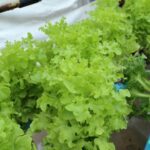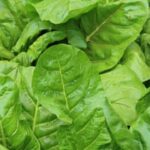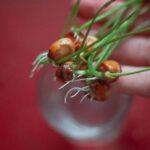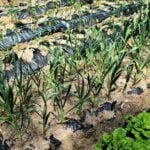Are you interested in starting a container garden with vegetables but not sure where to begin? This article will provide you with all the gardening ideas with pots and vegetables you need to get started. Container gardening offers numerous benefits, such as flexibility, space-saving, and accessibility. Whether you have a small outdoor space or want to grow vegetables indoors, utilizing pots for gardening can be a convenient and rewarding experience.
When it comes to container gardening with vegetables, choosing the right pots is essential for the success of your plants. From materials to size and drainage options, we’ll provide tips on selecting the perfect containers that will help your veggies thrive. Additionally, finding the best vegetables for container gardening is crucial. Not all veggies are suitable for growing in pots, but we’ll guide you through which ones are ideal and how to care for them.
In this section, we’ll explore the many benefits of container gardening with vegetables and prepare you for the valuable information that follows in this article. So, grab your gardening gloves and let’s dive into the world of growing delicious and nutritious veggies in pots.
Choosing the Right Pots
When it comes to container gardening with vegetables, choosing the right pots is crucial for the success of your garden. The first thing to consider when selecting containers for your vegetables is size. You’ll want to choose pots that are large enough to accommodate the root systems of your chosen vegetables. For example, deep-rooted vegetables like tomatoes and peppers will require larger pots, while shallow-rooted plants like lettuce and herbs can thrive in smaller containers.
In addition to size, it’s important to consider the material of the pots. Porous materials like terracotta allow for better air circulation and moisture control, but they also dry out faster. Plastic pots retain moisture better and are lighter in weight, making them easier to move around if needed. Whichever material you choose, make sure that the pots have drainage holes at the bottom to prevent waterlogging and root rot.
Another factor to keep in mind when selecting pots for your vegetable garden is mobility. Consider whether you want your containers to be stationary or if you’d like the option of moving them around to follow sunlight or protect them from harsh weather conditions. There are a variety of options available, from traditional clay pots to innovative self-watering containers with built-in wheels.
By carefully considering size, material, and mobility, you can ensure that you choose the perfect containers for your vegetable container garden. With the right pots in place, you’ll be well on your way to creating a thriving and bountiful garden full of fresh produce using gardening ideas with pots with vegetables.
Best Vegetables for Container Gardening
When it comes to container gardening with vegetables, not all veggies are created equal. Some are better suited for thriving in pots than others, making it essential to choose the right plants for your container garden. Here’s a guide to the best vegetables for container gardening:
- Tomatoes: One of the most popular choices for container gardening, tomatoes do well in large pots with good drainage. Choose determinate varieties for smaller pots and indeterminate varieties for larger containers.
- Peppers: Whether you prefer sweet bell peppers or spicy chili peppers, both types can thrive in pots. Make sure to use a larger container to accommodate the root system and provide ample sunlight.
- Carrots: These root vegetables are perfect for growing in deep pots with loose soil. Look for shorter or rounder carrot varieties that are well-suited for container growth.
It’s important to consider the space and sunlight requirements of each vegetable when planning your container garden. Leafy greens such as lettuce, spinach, and kale can thrive in smaller pots and partial shade, while larger plants like zucchini and eggplant will need more room and full sun exposure.
When selecting your vegetable plants, be mindful of their compatibility with containers. Some plants have shallow root systems and adapt well to confined spaces, while others require more room to grow. By choosing the right vegetables for your container garden, you’ll set yourself up for a successful and bountiful harvest.
In addition to these popular options, there are many other vegetables that can be successfully grown in pots. Experimenting with different varieties and combinations can lead to a diverse and rewarding container garden filled with an array of fresh produce all season long.
Tips for Successful Container Gardening
When it comes to successful container gardening with vegetables, the right soil, proper watering, and adequate sunlight are essential for the health and productivity of your plants. Here are some tips to ensure your container garden thrives:
Choosing the right soil is crucial for the success of your vegetable container garden. Opt for a high-quality potting mix that is well-draining and enriched with organic matter. Avoid using regular garden soil, as it can become compacted and hinder root development in containers. Consider adding perlite or vermiculite to improve aeration and drainage in the soil.
Watering is another key factor in container gardening with vegetables. The smaller volume of soil in pots means they dry out more quickly than garden beds. It’s important to monitor the moisture levels regularly and water as needed. A good rule of thumb is to water when the top inch of soil feels dry to the touch. Additionally, consider using a self-watering container or adding a layer of mulch on top of the soil to help retain moisture.
Lastly, sunlight requirements should not be overlooked when growing vegetables in pots. Most vegetable plants require at least 6-8 hours of direct sunlight per day to thrive. Choose a location for your containers that receives adequate sunlight, whether it’s on a sunny balcony, patio, or windowsill.
- Use a high-quality potting mix
- Monitor moisture levels regularly
- Choose a sunny location for your containers
Remember, by following these tips for successful container gardening with vegetables, you can ensure that your plants have the best possible environment to grow and produce an abundant harvest.
- Choose the right soil mix
- Water consistently and as needed
- Provide adequate sunlight for your containers
Creative Container Ideas
When it comes to gardening ideas with pots and vegetables, the possibilities are truly endless. Creative container ideas not only add aesthetic appeal to your garden but also maximize space and allow you to grow a variety of vegetables even in limited areas. There are numerous innovative ways to display vegetables in pots that can inspire both novice and seasoned gardeners.
One unique container idea is vertical gardening, which involves using tall structures or hanging planters to grow vegetables upwards, saving precious ground space. This method is especially beneficial for those with small outdoor areas or balconies.
Another creative way to display vegetables in pots is by using repurposed items such as old tires, wooden crates, or even kitchen containers like colanders and buckets. These unconventional containers not only add character to your garden but also promote sustainability by giving new life to discarded materials.
For a more visually appealing approach, consider creating a themed vegetable container garden. You can arrange different colored and textured plants in coordinating pots to achieve a cohesive and attractive display. Additionally, mixing various sizes of pots and incorporating decorative elements like trellises or stakes can add visual interest to your vegetable container garden.
When it comes to gardening ideas with pots with vegetables, thinking outside the traditional terra cotta pot can lead to beautiful and innovative displays that enhance any outdoor space.
| Container Idea | Description |
|---|---|
| Vertical Gardening | Growing vegetables upwards on tall structures or hanging planters. |
| Repurposed Items | Using old tires, wooden crates, or kitchen containers as unique planters. |
| Themed Vegetable Garden | Create visually appealing displays by arranging plants in coordinating pots. |
Companion Planting
Understanding Companion Planting
Companion planting is the practice of growing different plants together to benefit one another. In the case of vegetable container gardening, this means selecting compatible vegetables that can thrive when placed in the same pot. Some plants have symbiotic relationships, where one plant may repel pests that typically affect the other, or their roots may complement each other, improving soil quality and nutrient uptake.
Beneficial Pairings for Container Gardening
When considering companion planting for your vegetable container garden, it’s essential to choose pairs that will support each other’s growth. For example, planting leafy greens such as lettuce or spinach alongside taller vegetables like tomatoes can provide shade and protection for the greens while allowing them to thrive in a shared space. Similarly, pairing aromatic herbs like basil with tomatoes can help deter pests that commonly affect tomato plants.
Experimenting With Combinations
The beauty of companion planting is that it allows for experimentation and creativity in your vegetable container garden. You can try different combinations of compatible vegetables in various pots to see which pairings yield the best results. Some popular combinations include planting peppers with onions or garlic to help repel pests, or growing carrots alongside radishes to naturally aerate the soil and prevent overcrowding.
By incorporating companion planting into your gardening ideas with pots with vegetables, you can make the most out of limited space while promoting the overall health and productivity of your container garden. It’s an innovative method for maximizing yield and cultivating a harmonious environment for your vegetables to thrive.
Maintaining Your Container Garden
Pest Control
When it comes to maintaining a container garden with vegetables, pest control is essential to ensure a successful harvest. One effective method of pest control is using natural remedies such as insecticidal soap or neem oil. These treatments can help to keep common pests such as aphids, mites, and caterpillars at bay without harming your vegetable plants or the environment. Additionally, regularly inspecting your plants for any signs of pest infestation can help to catch and address issues early on.
Fertilization Techniques
Proper fertilization is crucial for the health and productivity of your container vegetables. To provide essential nutrients to your plants, consider using organic fertilizers such as compost or fish emulsion. These natural fertilizers can enhance the soil quality and promote robust growth without the use of harsh chemicals. Additionally, be mindful of the specific fertilization needs of each type of vegetable you are growing in order to tailor your approach accordingly.
Harvesting Tips
Knowing when and how to harvest your container-grown vegetables is key to enjoying a bountiful yield. Different vegetables have varying optimal harvest times, so it’s important to familiarize yourself with the specific harvesting requirements for each type of plant in your garden.
For example, leafy greens like lettuce can be harvested by simply picking individual leaves as needed, while root vegetables like carrots should be gently pulled from the soil once they reach maturity. By understanding the proper techniques for harvesting each vegetable variety, you can ensure that you reap the full benefits of your efforts in container gardening with vegetables.
Success Stories
Container gardening with vegetables has become increasingly popular, and for good reason. It allows people with limited space or poor soil conditions to still enjoy the benefits of growing their own fresh produce. Here are some success stories to inspire and educate those interested in starting their own vegetable container garden.
One successful example is the story of Sarah, a city dweller who transformed her small balcony into a flourishing vegetable paradise. Using a variety of pots and hanging planters, she was able to grow tomatoes, peppers, lettuce, and herbs in a compact space. Sarah found that she could easily control the soil quality and drainage in each pot, leading to healthier plants and higher yields than expected.
Another inspiring success story comes from Mark, who lives in an area with harsh weather conditions that make traditional gardening difficult. Undeterred, Mark researched different types of vegetables that thrive in containers and experimented with various pot sizes and materials. His hard work paid off as he now enjoys an abundant supply of bell peppers, carrots, and cucumbers throughout the year.
And finally, there’s the story of Maria, a busy working professional with limited time for gardening. She discovered the convenience of vertical gardening using wall-mounted pots and trellises for climbing vegetables like beans and peas. This innovative approach not only saved space but also made watering and harvesting much easier for Maria.
| Successful Gardener | Vegetables Grown | Key Takeaway |
|---|---|---|
| Sarah | Tomatoes, Peppers, Lettuce, Herbs | Control over soil quality led to healthier plants and higher yields. |
| Mark | Bell Peppers, Carrots, Cucumbers | Successfully adapted container gardening to harsh weather conditions. |
| Maria | Beans, Peas | Opted for vertical gardening for convenience due to limited time. |
These success stories illustrate the diverse ways in which container gardening with vegetables can be both rewarding and practical. Whether you’re a beginner or experienced gardener looking to try something new, these examples show that it’s possible to create beautiful and productive vegetable gardens regardless of your living situation or time constraints.
By taking inspiration from these success stories and implementing some creative ideas for displaying vegetables in pots – such as using vertical or hanging gardens – anyone can enjoy the satisfaction of growing their own fresh produce at home.
Conclusion
In conclusion, container gardening with vegetables is a rewarding and fulfilling way to grow your own food, even in limited space. With the right pots, vegetables, and care techniques, anyone can create a productive and beautiful container garden. Whether you have a small apartment balcony or a backyard with limited sunlight, there are creative solutions for growing your favorite veggies in pots.
By choosing the right pots for your vegetable garden, ensuring proper soil, watering, and sunlight requirements are met, and exploring unique ways to display your plants, you can create a thriving container garden that will provide fresh produce for months to come. Companion planting is another innovative technique that allows you to maximize space and yield by pairing compatible vegetables in the same pot.
If you’re new to gardening or simply looking for a new challenge, consider trying out some of the gardening ideas with pots with vegetables discussed in this article. The satisfaction of growing your own food and the beauty of seeing your plants flourish in containers is an experience like no other. So go ahead and dive into container gardening with vegetables – you won’t regret it.
Frequently Asked Questions
What Vegetables Work Well in Container Gardens?
Many vegetables thrive in container gardens, including tomatoes, peppers, lettuce, spinach, carrots, radishes, and herbs like basil and parsley. These plants don’t require a lot of space and can be easily grown in pots or planters.
What Is a Good Layout for a Vegetable Garden?
When planning a vegetable garden layout, consider grouping similar plants together based on their sunlight and water needs. This will make maintenance easier. Also, consider planting taller plants at the back so they don’t block sunlight from reaching smaller ones.
Can You Plant Different Vegetables in the Same Planter?
Yes, you can definitely plant different vegetables in the same planter as long as they have similar growing conditions and care requirements. It’s important to consider the size of each plant and ensure that they have enough space to grow without overcrowding each other.

If you’re looking to get into vegetable gardening, or are just looking for some tips on how to make your current garden better, then you’ve come to the right place! My name is Ethel and I have been gardening for years. In this blog, I’m going to share with you some of my best tips on how to create a successful vegetable garden.





